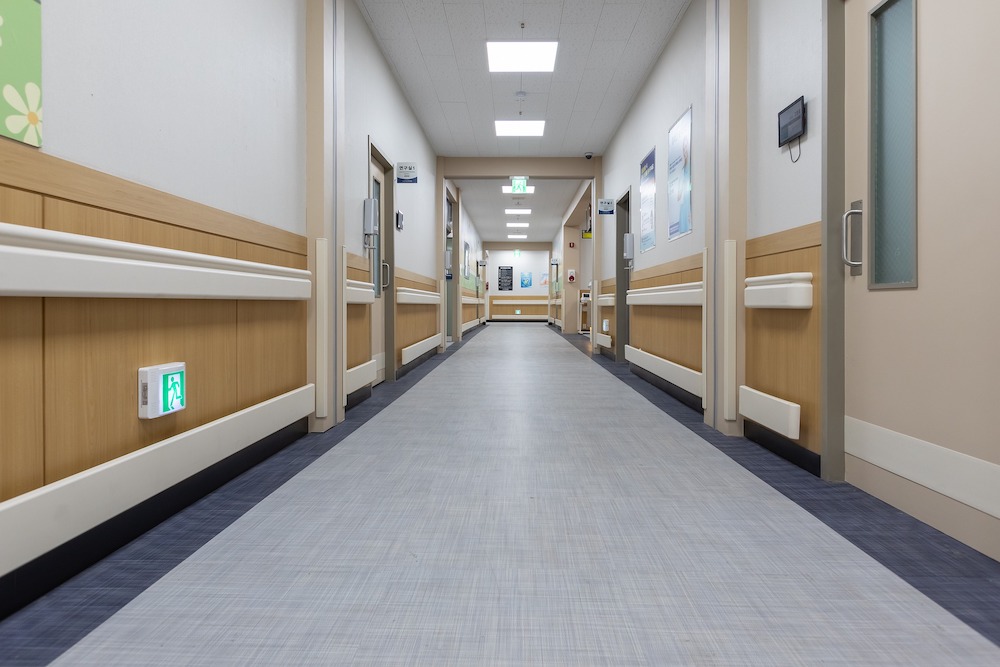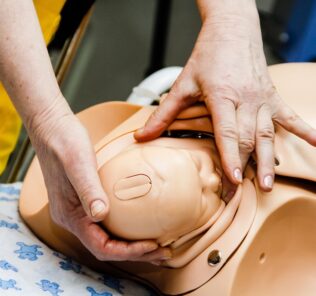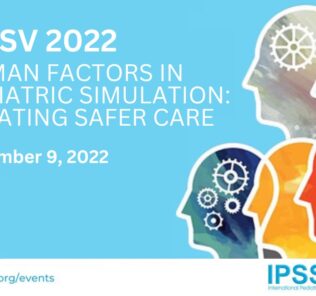Making Healthcare Safer with Systems-Focused Simulation
Improving the quality, safety, and efficiency of healthcare requires a commitment to fixing processes, not just people. Mistakes happen in the clinical setting, not only as a result of human error. Rather, failures occur when imperfect practitioners are asked to work within flawed systems that enable errors. Healthcare simulation is enticing simulation facilitators to consider extending their reach beyond the training of individuals and teams to other applications for this proven methodology. Systems-focused simulation explores institutions and their systems with the goal of improving the quality and safety of patient care. Principles of systems engineering, human factors and risk management are applied, and healthcare organizations are learning to prevent harm, increase effectiveness, streamline processes and control costs.
Creating facilities that support the delivery of safe and efficient patient care is the overall goal of Simulation-based Hospital Design Testing (SbHDT). This type of simulation is conducted during the pre-construction phase of a new clinical site. Optimizing efficiency and identifying latent issues are the objectives of SbHDT. Detecting potentially harmful conditions during the pre-construction phase allows design modifications to be made prior to the build. This avoids more costly changes in the future.
Full-scale mock-ups need to be created for SbHDT activities, since construction of the actual setting is not yet underway. This may seem extravagant, but the return on investment, in terms of patient safety and improved efficiency, far outweighs the expenditure of time and resources necessary for this type of testing. Imagine the cost if these issues were not remedied prior to patient occupancy (Monachino, 2021).
Sponsored Content:
A children’s hospital in the Atlanta area conducted SbHDT while designing a new hospital with 11 distinct clinical areas. Eighty-six simulation scenarios were run over 20 days, and each clinical area participated in two rounds of testing. The first simulation was used to identify concerns; the second SbHDT activity tested the proposed changes. As a result of this extensive evaluation of the environment, 190 latent conditions were discovered, culminating in 88 design changes. Walls were moved, corner angles were reduced, doorways were widened, and pass-throughs were installed (Colman et al., 2020). Construction began with a set of revised plans and an increased level of confidence among the key stakeholders.
Simulation-based Clinical Systems Testing (SbCST) is performed in the actual clinical space, after construction but prior to occupancy. As with SbHDT, the intention of SbCST is to create an environment that increases efficiency and ensures the safety of all those utilizing the space — patients, their families, and the personnel providing care. Simulation activities conducted in situ allow for the comparison between the work as imagined and the work as performed. Those scheduled to provide care in the setting are given the opportunity to run dress rehearsals to discover process inefficiencies and possible threats to safety. Identified issues are addressed and simulation scenarios are run again to evaluate the modifications (Monachino, 2021).
Cincinnati Children’s Hospital relied on systems-focused simulation to ensure the successful opening of a satellite hospital with a pediatric ER. This new facility would be operating under a staffing model that did not include residents, a significant difference from the main hospital. SbCST activities were designed to help define optimal staffing patterns, roles and scopes of practice. Uncovering latent safety threats (LSTs) before patient occupancy was another equally important goal of the simulations.
The SbCST activities were first conducted in the simulation labs, approximately three months before the opening of the new hospital. Once the clinical spaces were completed, additional SbCST simulations were run in situ. In all, 81 healthcare staff members participated in 24 simulation activities, resulting in the identification of 37 LSTs involving equipment, personnel and other resources.
Sponsored Content:
While not the main intention of the simulation activities, 46 clinical performance errors were also noted. Some of these appeared to be caused by knowledge gaps, and the offending individuals were referred for additional training. Other clinical errors appeared to be the result of systems being overwhelmed, leading to errors of omission or commission. These system-based errors were explored during the debriefing sessions and remedies were discussed (Geis et al., 2011).
The secondary aim of systems-focused simulation — improving physical spaces and systems operating within — requires an altered approach from the one employed during simulation-based education activities. The individual and team skills of those working in the space are not the focus; therefore, scenarios developed for process-oriented simulation emphasize evaluation of the environment, not medical management. Those charged with delivering process-oriented activities need specialized training. Facilitation and debriefing of SbHDT and SbCST scenarios often require a team of simulation educators to direct the activities and conduct the debriefings.
Progression of the scenario is directed by the facilitator to meet the predetermined objectives, and does not rely on the decision-making skills of the participants. The goal of systems-focused simulation is the creation of a clinical environment conducive to providing high-quality patient care, while mitigating risk and reducing untoward effects (Colman et al., 2020).
The Society for Simulation in Healthcare (SSH) recognizes the value of systems-focused simulation and its impact on patient care. Simulation programs can seek accreditation in the area of systems integration by demonstrating a commitment to improving healthcare delivery through the use of systems-focused simulation. Successful programs must be able to describe the systematic approaches they apply to solve organizational safety, quality or value concerns (SSH Committee for Accreditation, 2016).
To err is human. Therefore, reducing the number of mistakes in healthcare requires a multi-pronged approach. Individual and team competency play a significant role, but systems improvement is the key to making healthcare safer and more efficient. Processes that provide added layers of protection can mitigate the human condition. A highly trained, well-educated clinician is more prone to error if he or she is operating in a flawed environment. Systems-focused simulation can enhance patient safety and improve outcome metrics by identifying the root causes of real or potential issues, so that countermeasures can be taken.
Learn More About Simulation Debriefing
References:
- Colman, N., Dalpiaz, A., Walter, S., Chambers, M. S., & Hebbar, K. B. (2020). SAFEE: A Debriefing Tool to Identify Latent Conditions in Simulation-based Hospital Design Testing. Advances in Simulation, 5(1). https://doi.org/10.1186/s41077-020-00132-2
- Colman, N., Doughty, C., Arnold, J., Stone, K., Reid, J., Dalpiaz, A., & Hebbar, K. B. (2019). Simulation-based clinical systems testing for healthcare spaces: from intake through implementation. Advances in Simulation, 4(1). https://doi.org/10.1186/s41077-019-0108-7
- Geis, G. L., Pio, B., Pendergrass, T. L., Moyer, M. R., & Patterson, M. D. (2011). Simulation to assess the safety of new healthcare teams and new facilities. Simulation in Healthcare: The Journal of the Society for Simulation in Healthcare, 6(3), 125–133. https://doi.org/10.1097/sih.0b013e31820dff30
- Monachino, A. M. (2021, April 12). Using Medical Simulation to Intentionally Probe Systems: What’s It All About? HealthySimulation.com LEARN. https://learn.healthysimulation.com/course/medical-simulation-healthcare-systems
- The Society for Simulation in Healthcare, Committee for Accreditation of Healthcare Simulation
Programs. (2016, May). Systems Integration: Standards and Measurement Criteria. https://www.ssih.org/Portals/48/Accreditation/2016%20Standards%20and%20Docs/Systems%20Integration%20Standards%20and%20Criteria.pdf
Jeanne Carey is the Director of Simulation at Baylor University Louise Herrington School of Nursing in Dallas, Texas. She holds advanced certification as a simulation educator and has 10 years of experience in all aspects of simulation, including the development and implementation of new simulation-based learning activities, training of simulation facilitators, and recruitment and management of standardized patients. Carey and the LHSON Simulation Team created the Two-Heads-Are-Better-Than-One (2HeadsR>1) strategy for role assignment in simulation. She is active in several simulation organizations and currently serves as an INACSL Nurse Planner.
Sponsored Content:


















